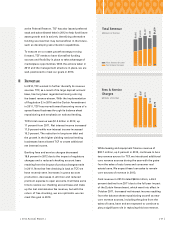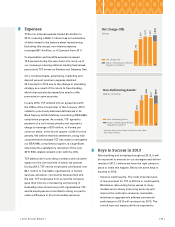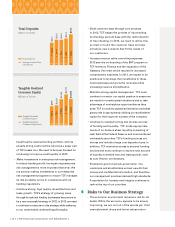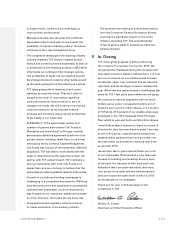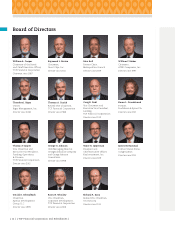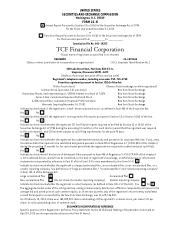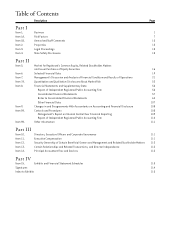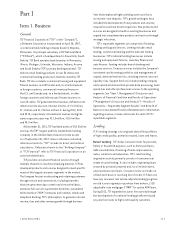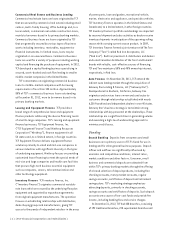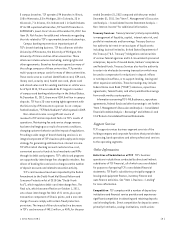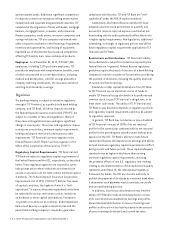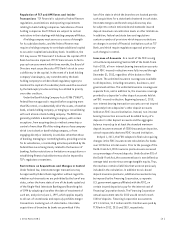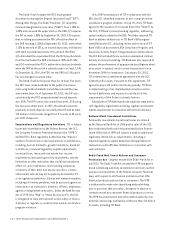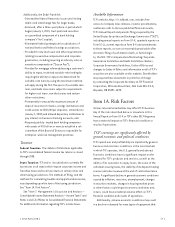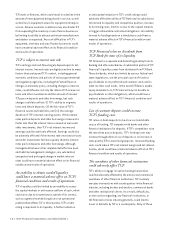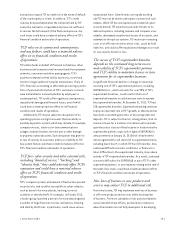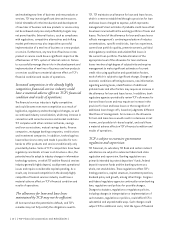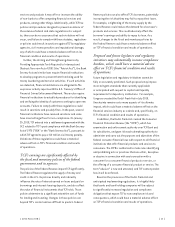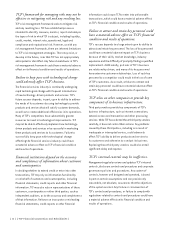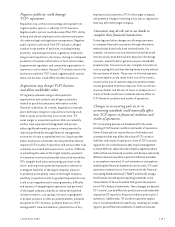TCF Bank 2012 Annual Report Download - page 19
Download and view the complete annual report
Please find page 19 of the 2012 TCF Bank annual report below. You can navigate through the pages in the report by either clicking on the pages listed below, or by using the keyword search tool below to find specific information within the annual report.8 campus branches. TCF operates 194 branches in Illinois,
108 in Minnesota, 53 in Michigan, 36 in Colorado, 25 in
Wisconsin, 7 in Arizona, 4 in Indiana and 1 in South Dakota.
Of its 228 supermarket branches, TCF had 157 branches in
SUPERVALU’s Jewel-Osco® stores at December 31, 2012. See
Item 1A. Risk Factors for additional information regarding
the risks related to TCF’s supermarket branch relationships.
Campus banking represents an important part of
TCF’s branch banking business. TCF has alliances with the
University of Minnesota, the University of Michigan, the
University of Illinois and two other universities. These
alliances include exclusive marketing, naming rights and
other agreements. Branches have been opened on many of
the college campuses of these universities. TCF provides
multi-purpose campus cards for many of these universities.
These cards serve as a school identification card, ATM card,
library card, security card, health care card, phone card
and stored value card for vending machines or similar uses.
As of April 2012, TCF was ranked the 5th largest in number
of campus card banking relationships in the United States.
At December 31, 2012, there were $284.5 million in campus
deposits. TCF has a 25-year naming rights agreement with
the University of Minnesota to sponsor its on-campus
football stadium, “TCF Bank Stadium®
,” which opened in 2009.
Non-interest income is a significant source of
revenue for TCF and an important factor in TCF’s results of
operations. Maintaining fee and service charge revenue
has been challenging as a result of economic conditions,
changing customer behavior and the impact of regulations.
Providing a wide range of branch banking services is an
integral component of TCF’s business philosophy and a major
strategy for generating additional non-interest income.
TCF offers retail checking account customers low-cost,
convenient access to funds at local merchants and ATMs
through its debit card programs. TCF’s debit card programs
are supported by interchange fees charged to retailers. Key
drivers of banking fees and service charges are the number
of deposit accounts and related transaction activity.
TCF’s card revenues have been impacted by the Durbin
Amendment to the Dodd-Frank Wall Street Reform and
Consumer Protection Act of 2010 (the “Dodd-Frank
Act”), which regulates debit-card interchange fees. The
final rule, which became effective on October 1, 2011,
sets a base interchange fee limit of 21 cents, plus a per
transaction component of 5 basis points, and a one cent
charge if issuers comply with certain fraud protection
provisions. The impact of the rule resulted in a decrease
in TCF’s card revenue of $43.2 million, or 45%, for the year
ended December 31, 2012 compared with the year ended
December 31, 2011. See “Item 7. Management’s Discussion
and Analysis — Consolidated Income Statement Analysis —
Non-Interest Income” for additional information.
Treasury Services Treasury Services’ primary responsibility
is management of liquidity, capital, interest rate risk, and
portfolio investments and borrowings. Treasury Services
has authority to invest in various types of liquid assets
including, but not limited to, United States Department of
the Treasury (“U.S. Treasury”) obligations and securities
of various federal agencies and U.S. Government sponsored
enterprises, deposits of insured banks, bankers’ acceptances
and federal funds. Treasury Services also has the authority
to enter into wholesale borrowing transactions which may
be used to compensate for reductions in deposit inflows
or net deposit outflows, or to support lending, leasing and
other expansion activities. These borrowings may include
Federal Home Loan Bank (“FHLB”) advances, repurchase
agreements, federal funds, and other permitted borrowings
from credit worthy counterparties.
Information concerning TCF’s FHLB advances, repurchase
agreements, federal funds and other borrowings is set forth in
“Item 7. Management’s Discussion and Analysis — Consolidated
Financial Condition Analysis — Borrowings” and in Notes 11 and
12 of Notes to Consolidated Financial Statements.
Support Services
TCF’s support services business segment consists of the
holding company and corporate functions that provide data
processing, bank operations and other professional services
to the operating segments.
Other Information
Activities of Subsidiaries of TCF TCF’s business
operations include those conducted by direct and indirect
subsidiaries of TCF Financial, all of which are consolidated
for purposes of preparing TCF’s consolidated financial
statements. TCF Bank’s subsidiaries principally engage in
leasing and equipment finance, inventory finance and
auto finance activities. See “Item 1. Business — Lending”
for more information.
Competition TCF competes with a number of depository
institutions and financial service providers and experiences
significant competition in attracting and retaining deposits
and in lending funds. Direct competition for deposits comes
primarily from banks, savings institutions, credit unions
{ 2012 Form 10K } { 3 }


